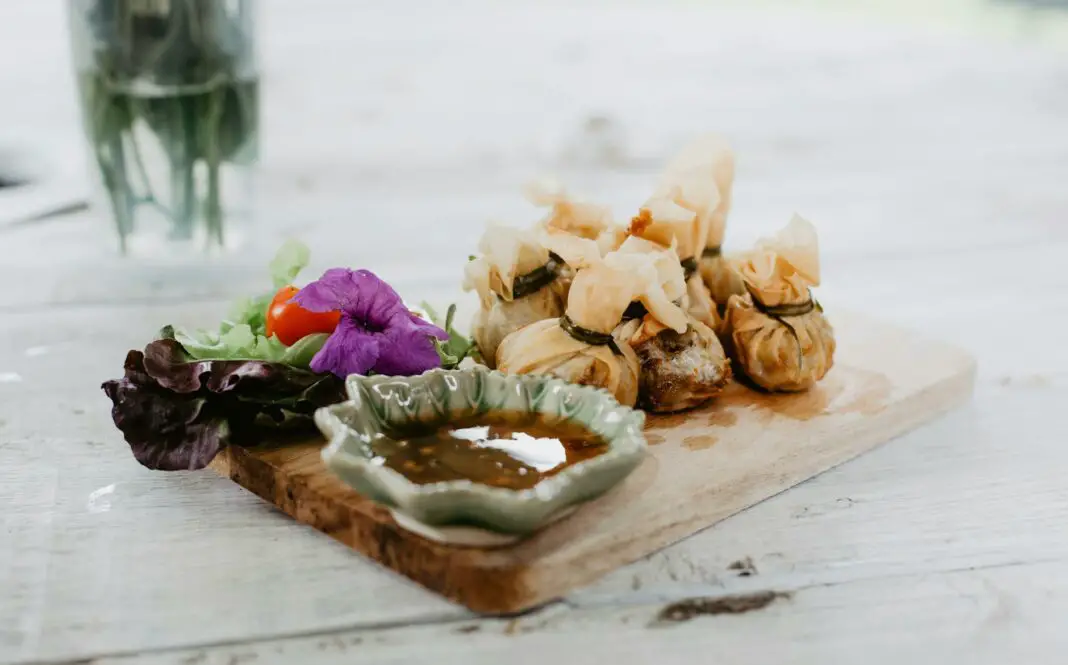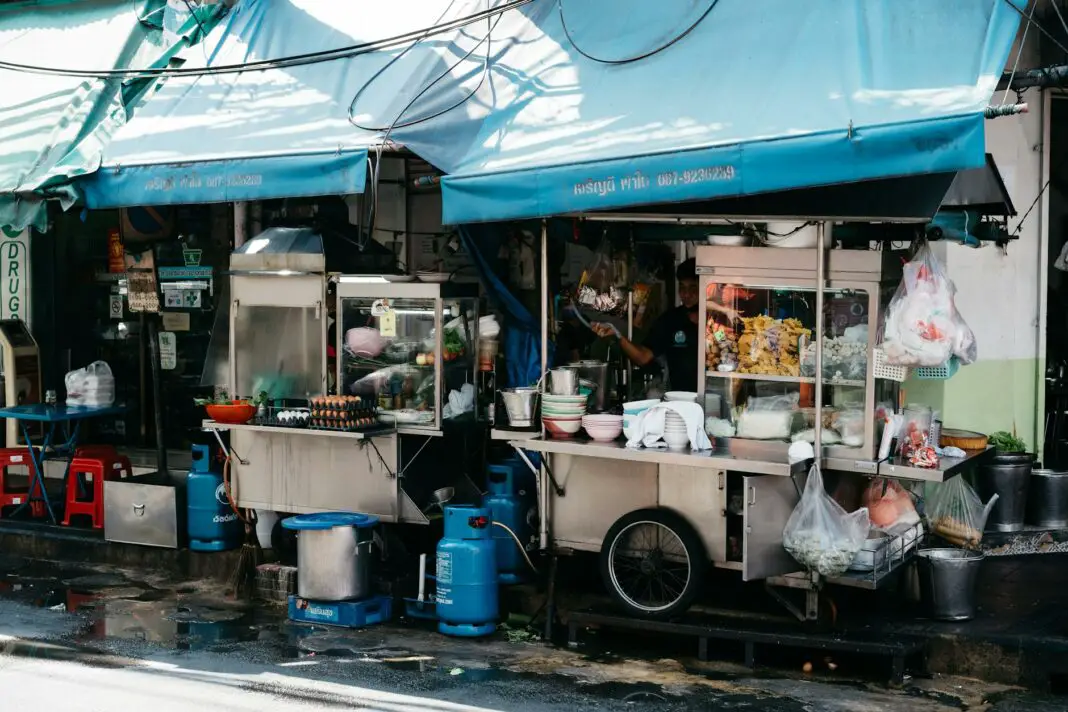Embarking on a trip to Thailand is not merely a vacation; it’s an exhilarating journey through a vibrant culture rich in tastes and flavors that can leave anyone enchanted. As you wander the bustling streets of Bangkok or relax on the pristine beaches of Phuket, the mouth-watering aromas wafting from street stalls will beckon you to explore a deeper layer of Thai gastronomy. Beyond the famous Pad Thai and green curry, numerous secret dishes await discovery, promising to blow your mind with their unique combinations of ingredients and cooking techniques. This blog post dives into these hidden gems of Thai cuisine, ensuring your culinary adventure is both delicious and unforgettable.
In this comprehensive guide, we will explore the hidden culinary treasures that lie within Thailand’s diverse regions. From fragrant bowls of Kanom Jeen to mouthwatering bites of Laab, each dish tells a story bound with culture and history. Not only will this post serve as your gateway to exploring these secret flavors, but it will also provide actionable tips for enjoying them to the fullest. Prepare to have your taste buds tantalized and your travel experiences enriched!
Table of Contents
- Kanom Jeen: The Thai Rice Noodle Wonder
- Laab: A Spicy Salad That Will Ignite Your Senses
- Khao Soi: Northern Thailand’s Creamy Noodle Soup
- Nam Prik: Discovering the Dipping Sauces of Thailand
- Som Tam: A Crunchy Salad with a Kick
- Secret Tips for Exploring Thai Cuisine
- Discovering the Culinary Legacy of Thailand
Kanom Jeen: The Thai Rice Noodle Wonder
The delightful dish of Kanom Jeen is not just a meal but an experience that resonates with the soulful essence of Thailand. This dish consists of thin, fermented rice noodles typically served cold with an array of vibrant curry sauces. Generous toppings like fresh herbs, bean sprouts, and chili add layers of flavor, ensuring every bite is a tantalizing combination of textures and tastes. While Kanom Jeen’s primary appeal lies in its versatility, different regions boast their own unique variations. For example, in Southern Thailand, these noodles are often paired with rich and spicy fish curries, while in the North, they complement a fresh, herbaceous green curry sauce perfectly.
To truly savor this dish, consider visiting local markets or eateries where you can order your Kanom Jeen topped with a selection of sauces tailored to your liking. Engaging with locals who are eager to share their preferences can enhance your culinary journey, making your experience more authentic and immersive. Moreover, this dish serves not just as a meal but as a shared moment of joy among friends and family, showcasing Thailand’s communal dining culture.
Laab: A Spicy Salad That Will Ignite Your Senses
Laab offers a piquant experience that captures the essence of Northern Thai cuisine through its harmony of flavors and freshness. This salad often includes minced meat, fresh herbs, and a generous squeeze of lime, creating a dish celebrated for its fiery taste and aromatic qualities. Traditionally made with chicken, pork, or even beef, Laab features an essential ingredient: toasted rice powder, providing a unique crunch that contrasts beautifully with the herbs and spices. It’s not just a delightful dish but a celebration of the region’s diversity and vibrant flavors.
As you indulge in Laab, let the striking mix of spicy, sour, salty, and savory tantalize your palate. Seeking out Laab in a local eatery frequented by residents can provide great insights into regional variations that may differ widely from one place to another. The experience can inspire your own culinary creativity as you think about how to replicate or reimagine this celebrated dish back home.
Khao Soi: Northern Thailand’s Creamy Noodle Soup
Khao Soi is nothing short of a culinary masterpiece that exemplifies the rich flavors of Northern Thailand. This creamy, coconut-based noodle soup brimming with egg noodles, generously garnished with pickled mustard greens and crispy noodles on top, is a dish you will crave time and time again. The combination of spices creates an aromatic bouquet that makes this amazing dish both comforting and invigorating. Tasting Khao Soi feels like embracing a warm hug on a nostalgic winter evening, where each spoonful guides you deeper into the heart of Northern Thai culture.
Beyond the flavor, Khao Soi serves a narrative about its diverse cultural origins, blending influences from China, Laos, and Myanmar. While dining, ask your server about the dish’s history or any unique local tweaks. Every bowl of Khao Soi tells a story of communal heritage, intricacies of spice blending, and a warm welcome to travelers seeking comfort in every delicious dive.
Nam Prik: Discovering the Dipping Sauces of Thailand
Nam Prik is not just one dish but a dazzling array of dipping sauces that will elevate any meal to new heights. The variety ranges from spicy and tangy to sweet and savory, each crafted using fresh, regional ingredients that encapsulate the spirit of Thai cooking. These sauces typically accompany a range of raw and grilled vegetables, rice, or even meat dishes, making them the perfect complement to your culinary experience. Some famous Nam Prik, such as Nam Prik Pao—smoky chili dip—can transform an ordinary meal into an explosion of flavor.
When you’re in Thailand, it’s an excellent practice to inquire about local varieties of Nam Prik at restaurants. Each region will have its unique take, reflecting the local ingredients and preferences. By asking questions, you enrich your dining experience, unveil incredible flavors that may not be prominent in more mainstream tourist spots, and embrace the real gastronomic diversity of Thailand.
Som Tam: A Crunchy Salad with a Kick
When exploring Thailand, one cannot overlook Som Tam, the legendary green papaya salad bursting with zest and freshness. The juxtaposition of crisp, shredded papaya with tart lime, fish sauce, and chilies creates an electrifying taste sensation. While traditionally served with peanuts and often teamed with sticky rice, the salad can vary depending on the region. Som Tam can have variations that incorporate local vegetables or tropical fruits, amplifying its flavors and showcasing how remarkably adaptable this dish is.
It’s also essential to partake in the process of making Som Tam if you find a local vendor that prepares it using a mortar and pestle. This live preparation adds entertainment to the dining experience while showcasing the culinary craftsmanship that embodies the essence of Thai cooking. Engaging in this experience not only tantalizes your taste buds but also deepens your appreciation for each ingredient’s role in creating this delightful dish.
Secret Tips for Exploring Thai Cuisine
To truly savor the rich tapestry of flavors that Thai cuisine has to offer, consider immersing yourself in local food culture. One great recommendation is to join a cooking class where you can learn directly from seasoned chefs, allowing you to explore various dishes hands-on. Purchasing fresh ingredients from bustling markets can unveil hidden gems and regional specialties, enhancing your understanding of meal preparation.
Do not shy away from street food vendors; they often hold the keys to authentic culinary delights you won’t find elsewhere. Engaging with the local community about their favorite dishes can open your eyes to flavors and experiences not mentioned in the guidebooks. Try asking for recommendations, and don’t hesitate to ask your waiter for unique off-menu offerings. This inquiry will encourage you to expand your palate and deepen your love for these hidden dishes.
Discovering the Culinary Legacy of Thailand
Exploring Thailand is a vibrant adventure where food plays a pivotal role in daily life. The significance of sharing meals draws communities together, creating bonds that transcend cultural barriers. Every secret dish you discover adds to your understanding of culinary traditions that have been passed down through generations, making your experience richer and more meaningful. Whether it’s the harmony of flavors, the colors on your plate, or the warmth shared during meals, each aspect encapsulates Thailand’s enduring appreciation for gastronomy.
As you navigate through bustling markets or dine at quaint eateries, remember that food in Thailand is not just nourishment; it’s a celebration of life, culture, and artistry. The culinary legacy you encounter can be an enriching experience that intertwines with the heart and soul of the extraordinary country.
Final Thoughts on Exploring Thai Cuisine
As you prepare for your voyage into the heart of Thailand, allow the flavors and aromas to guide your journey. The secret dishes that await are not just alternatives to well-known classics; they are an invitation to discover hidden gems that will reshape your understanding of Thai cuisine. Each taste transports you through the cultural landscape of the country, allowing your palate to revel in the vibrant culinary artistry unique to this beautiful region.
Your culinary adventure promises to be filled with incredible flavors, ensuring every dish tells a story worth sharing. Embrace this opportunity to savor the extraordinary, to share unforgettable meals with locals, and to become part of a vibrant culinary tapestry that is alive with passion and tradition.
Frequently Asked Questions
What is the best time to visit Thailand for food lovers?
The ideal time for food enthusiasts to visit Thailand is during the cooler months between November and February. This period offers comfortable temperatures and various food festivals, showcasing seasonal dishes.
Are there vegetarian options available in Thai cuisine?
Absolutely! Thai cuisine features countless vegetarian dishes. Classic examples include Pad Thai with tofu, Som Tam, and various curries made without meat. Always inquire about vegetarian options when dining.
Is street food safe to eat in Thailand?
Generally, street food in Thailand is safe to consume, especially if it’s freshly cooked. However, it’s wise to observe vendor hygiene practices and seek out busy stalls popular with locals for the best experiences.
How can I learn to cook Thai dishes like a local?
Joining a cooking class during your trip is the best way to master Thai dishes. Many classes offer a hands-on experience, allowing participants to shop for ingredients at local markets and then create authentic meals guided by local chefs.
Image Credit: Pexels





